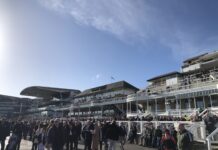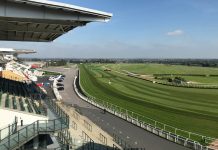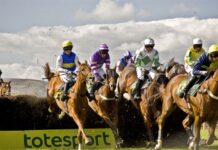Flat racing at Haydock Park comes to an end on Friday. Merseyside’s second biggest race course stages race days across the whole year. More crowds flock to National Hunt racing, with many events taking place at the same venues.
Here is a guide to “the flat” and memorable racing moments.
 Haydock Park’s grandstands
Haydock Park’s grandstands
What is Flat Racing?
-As the name indicates, the courses consist of a flat surface, with no hurdles or jumps along the way.
-The race distances vary between five furlongs to twenty furlongs.
-The horses involved in flat racing mature quickly and begin their careers as young as two or three- years-old.
 The Winner of the 2021 Flat Race Finale – James Doyle
The Winner of the 2021 Flat Race Finale – James Doyle
Last Year’s Winner
Imrahor ridden by James Doyle was the winner of the 2021 Flat Finale at Haydock Park. The thoroughbred horse hasn’t returned to the track since that impressive victory. Though jockey James Doyle has competed in multiple events, the pick of the bunch were his victories in this season’s 1000 and 2000 Guineas Stakes.
Highlights of the Flat Racing Season- The Classics
2,000 Guineas Race in Newmarket, May, One Mile Distance.
Winner: Coroebus Rider: James Doyle Trainer: Charlie Appleby
Rider James Doyle won his maiden British Classic, beating the heavy favourite Native Trail to the finish line, who was previously unbeaten.
1,000 Guineas Race in Newmarket, May, One Mile Distance.
Winner: Cachet Rider: James Doyle Trainer: George Boughey
It was back-to-back classic wins for James Doyle, who steered Cachet to a 16/1 win, making it two wins in two days for the jockey.
Oaks, Epsom Race, June, One Mile Four Furlong Distance.
Winner: Tuesday Rider: Ryan Moore Trainer: Aidan O’Brien
Tuesday won by just a short head on her third birthday, to award Aidan O’Brien a record-breaking victory, as he became the trainer with the most British Classic winners to his name.
Derby, Epsom Race, June, One Mile Four Furlong Distance.
Winner: Desert Crown Rider: Richard Kingscote Trainer: Sir Michael Stoute
Sir Michael Stoute celebrated his sixth win in this particular race. Rider Richard Kingscote beat 150/1 Hoo Ya Mal to the line.
St Leger, Doncaster, September, One Mile Six Furlong Distance.
Winner: Eldar Eldarov Rider: David Egan Trainer: Roger Varian
A race day remembered more for events off the track, as the Racing community mourned the loss of her Majesty Queen Elizabeth the Second. Nevertheless, David Egan succeeded in his first ride at the World’s oldest Classic.
 Guineas Race at Newmarket
Guineas Race at Newmarket
How Flat and Jump Courses Differ
Across the UK there are 59 racecourses- 19 are dedicated purely to flat racing, 24 only host jump meetings, whilst the other 16 venues can hold events for both. Each course varies from one to another, some with flatter surfaces and further courses with steeper finishes. Though the difference might be marginal, some horses will often demonstrate better form on certain tracks.
How Flat and Jump Horses Differ
Along with the differences in the races they contest, there are noticeable variances in the types of horses that compete in the two forms of horse racing. National Hunt horses tend to be larger, more physical figures, that are built to avoid the obstacles in their way, Whereas flat horses come across as more athletic and agile beings, that are able to perform that shorter burst of speed at the business end of the race.
A flat horse’s career usually begins at around two-years-old, a much younger introduction into the sport compared to hurdle jumpers. National Hunt horses can still compete into their teens, in contrast to flat horses that have a tendency to stop racing at around eight-years-old. As flat horses begin racing at such a young age, they can become a superstar overnight because they are able to learn and improve quickly.
Flat Racing History
Flat horse racing dates back to the 17th century. Jockey Gordan Richards is the sports’ individual with the most title victories- collecting 26 in his time. Queen Elizabeth the Second was seen as flat racing’s ‘greatest champion’. Since she was just sixteen, Her Majesty engaged with horses and became one of the most prominent British owner-breeders of thoroughbreds. Royal Ascot, an event to jot in the season’s calendar, has not always been a major social occasion for the public, but also sees members of the royal family attend every year.
Haydock Park held its first race in 1751. The course holds races on 32 days each year, making it the busiest track in Britain. Haydock Park was initially used for Hare coursing in the early 1880s before it was later converted into grounds for horse racing.







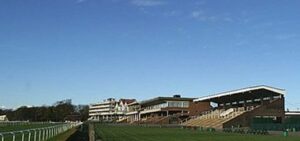 Haydock Park’s grandstands
Haydock Park’s grandstands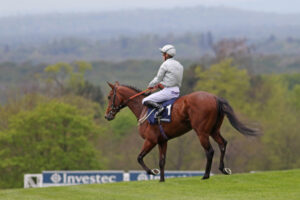 The Winner of the 2021 Flat Race Finale – James Doyle
The Winner of the 2021 Flat Race Finale – James Doyle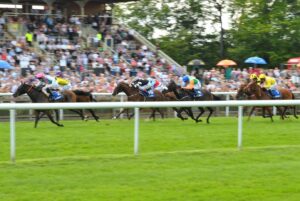 Guineas Race at Newmarket
Guineas Race at Newmarket